When I started flying, runways were predominately unpaved; I recall being startled by my first landing on asphalt when I heard the tires spinning against an aggregate surface. Since most of my early experience was with turf airports, I learned to deal with the peculiarities of operating from grass. Nowadays, landing on sod is very much the exception, rather than the rule. With pavement, we are accustomed to coming and going at will, seldom giving a thought to runway condition unless it’s contaminated by slick white stuff.
It is a fact that good grass runways are friendly, inviting places for aircraft, especially those of the tailwheel persuasion. There’s something elemental about launching from a grassy hummock after a few bounds of takeoff run, climbing away from a flying field that is, in fact, a field. Rolling one’s tires into the brush of clipped turf is like being received by welcoming arms; you are forgiven for slight misalignment and uncorrected crosswind drift, the turf’s lubrication allowing a minor faux pas without squeal or screech.
Now, having said all that, we have to understand the limitations that come with unpaved operation. The bliss I’ve described above applies to good grass runways…and they are rare. All too often, the little open circle on your chart turns out to be a neglected piece of native sod, perhaps once cared for but no longer loved. These are the two biggest points to keep in mind when contemplating the use of a grass runway: They aren’t all the same, and they are always in a state of change.
If you’re like the majority of today’s pilots, you learned to fly from a paved strip, and you’ve flown mostly to other paved runways. You can pretty much take it for granted that each one will be relatively level, free of potholes, and about like it was the last time you used it. The airplane’s stopping and acceleration performance will be much like you expect at home. By comparison, when you land on dirt, you must stay alert, proceed with caution, watch for danger signs, and add safety margins to your normal distance requirements.
Why so? Because grass runways are living organisms. They absorb water, rather than just shed it. Critters can burrow into and excavate the surface, both to find a meal and avoid becoming one. The sod covering grows, if conditions are right, and unless it’s given regular haircuts it will become dense and tall enough to entrap your landing aircraft. In cold weather, freezing and thawing cycles will turn the top layer into pie filling. Expect to encounter some unusable periods in the annual life cycle of a grass airport.
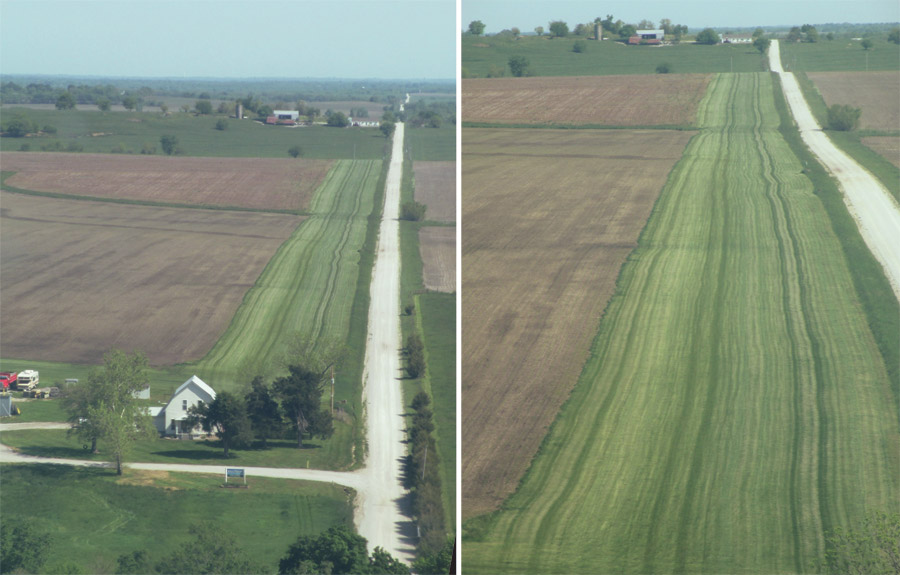
Private grass strips can range from perfectly manicured lawns to unmowed turf or recently mowed hay fields. They can look different from far away or up close—so always be ready to go around if the surface isn’t to your liking.
Know Before You Go
It’s best, then, to check with the locals before you fly into a strange grass field or, better yet, visit it on the ground to verify its condition. Naturally, if it’s a private restricted-use airport, you must contact the owner to seek permission anyway. Such permission is almost always stated as “use it if you want to,” which you should take as an invitation to operate at your own risk. Make sure you ask about tribal-knowledge details; is one end rougher than the other, are there ditches to avoid, what kind of obstructions will be encountered on approach or departure? Even determining the exact orientation of the runway can require some guidance, unless it’s marked prominently with edge indicators. Grass fields look like what they are—grass fields. Don’t land across the fence in an adjoining pasture by mistake.
Bear in mind that simply seeing a private airport marked on a sectional chart carries no implication of its safety or suitability of use. When the FAA lists a landing facility as private-use, not open to the public, there are no standards applied, other than marking it as “objectionable” if there’s a possible conflict with prior use of the airspace. Public-use airports are checked for hazards and denied such status if found unsuitable, but a private field can have power lines, a drainage culvert, a dog-leg bend in the runway, or mere hundreds of feet of usable length. Safety is the owner’s prerogative.
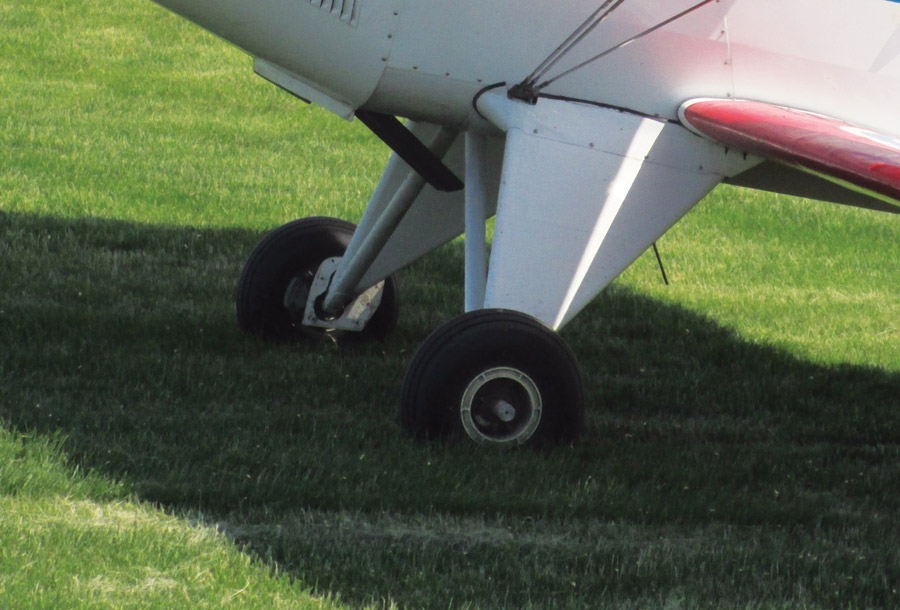
Most tailwheel airplanes intended for non-paved airport operations have 6.00×6 tires, or better yet, 8.00×6.
Should You Use It?
For the above reasons, it’s better to use only public-use grass runways. If you’re invited to visit a private strip, make the first landing with someone who’s familiar with it, riding shotgun to warn you of hazards. If the grass strip is a supplemental crosswind runway at a paved airport, be sure to check for NOTAMs and watch for X’s indicating that it’s out of service.
Is your airplane suitable for unpaved surfaces? Most tailwheel airplanes with full-size (6.00×6) tires can negotiate well-maintained grass strips. If you have a nosewheel, make sure it’s robust enough to take the extra punishment of jouncing over uneven surfaces, and that you can apply enough up-elevator to lighten its load. Be sure you have plenty of propeller clearance to avoid hitting the surface when pitching over the hummocks.
Many homebuilts have smaller tires and spindly nosegear struts, to enhance speed and simplify construction. These should be used only on the best-kept grass strips, not landed out in the rough. Likewise, tight wheel fairings won’t last long in the bush. Floatation is important when using soft surfaces, like rain-soaked turf or sand. Be aware that your paint and belly or flap skins can suffer damage from stones thrown back by the propeller and tires.
Try to keep moving to minimize propeller blade nicks from pebbles drawn up under the prop disc. Stop only on grassy areas, not bare patches that might be rocky. If you feel the aircraft begin to bog down in a soft spot, hold the stick back and apply extra power to keep moving with the nose up, until you reach firmer ground. You’ll have to taxi slower than you would on pavement, to avoid excessive stress to the gear, and it’ll take more power than usual to drag the tires through heavy grass, leading to overheating during a long taxi.
Make sure the runway length is adequate, and by that I mean add at least 50% to the takeoff run you expect on a paved runway. Much depends on the soil condition, the height of the grass, the type of grass, and the roughness of the surface; the latter can cause enough bouncing to disrupt airflow over the wing during takeoff. Naturally, use maximum-effort soft-field flap settings and technique during takeoff and landing. Expect braking to be less than optimum, particularly on wet grass.
The best asset for operating on an unpaved runway is a slow takeoff and landing speed. If your airplane needs 60 knots or more to fly, you’ll want to stick to only the best grass strips. If you have retractable gear, restrict your operations to just occasional visits to the very best turf runways. Aircraft that were designed in the 1950s very likely had grass airports in mind. If your aircraft originated in the 1970s, it probably was built primarily for pavement.
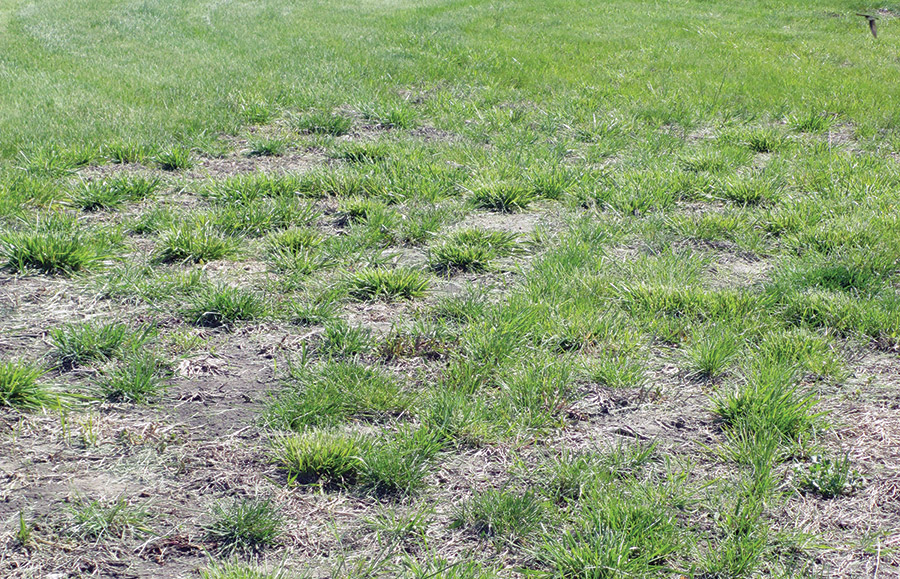
Some grass runways have seen better days. Healthy turf interspersed with bare dry spots can create a very rough ride.
What Are You Looking For?
Your protection against grass field hazards must be your eyeballs. As you fly over, note the coloration of the surface, a lighter shade denoting where most of the traffic has worn down the grass. That should correlate with any runway boundary markings you see, along with an outline indicating regular mowing. In the absence of any of these things, proceed with utmost caution.
Water glinting in the sunlight signals a warning to stay away; if most of the strip appears dry, roll out and taxi only where there’s no visible water. You don’t want to harm the airstrip’s surface by cutting ruts, and you could damage the aircraft, or even flip over if it’s very soft.
If the grass is waving noticeably in the wind, it’s probably too tall to use for landing or takeoff. Some owners like to get a hay crop from their runway each year before putting it to use.
Discolored, dark-shadow areas may indicate mole hills, gopher holes or old ruts from careless pilots. Avoid these, along with any rock outcrops you see, and look for washed-out bare spots from heavy rains, another place you don’t want to go. Don’t just land without looking; make a pass over the field at traffic pattern height and, if not satisfied, “drag the field” at 200 feet for a closer look, keeping speed well above stall.
Be ready to go around if you spot danger at the last second, even after you’ve touched down and feel the tires digging into soft mud. If you make ruts, keep the plane moving until you reach firmer ground, then walk back to tamp down the edges of your ruts after you’ve parked. It’s the considerate thing to do, so the next pilot won’t encounter your hardened divots with his landing gear. Similarly, avoid locking a brake to spin around, which can tear up the turf.
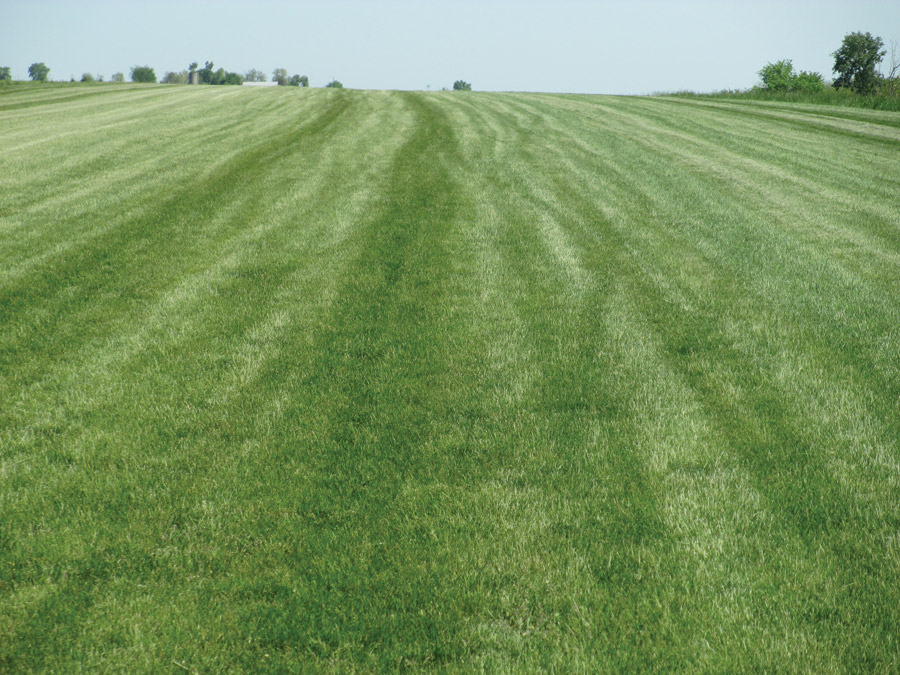
Make your first landing on a private grass strip with someone who is familiar with it riding shotgun to warn you of any hazards.
Rolling Your Own
Interested in using your own property for an airport? Not so fast; you can’t just mow off a piece of pasture and start landing there. FAR Part 157, a relatively short (for an FAR) piece of legal code, requires that you notify the FAA 90 days before starting work on your airport, filing the appropriate paperwork for review. For private use, there isn’t likely to be any objection unless it interferes with other use of the airspace. You may even decline to have your strip designated on the chart.
The FAA’s airspace determination doesn’t obviate any local codes and ordinances that your state or jurisdiction has on the books. Don’t do a lot of work only to find that you aren’t permitted to have an airport in your township, or that you’ll first have to hold public hearings on the matter.
Now to the practical matters; land in its natural state is rarely suitable for a landing facility. For good drainage, you need to move dirt to not just level the surface, but to build a crown with gentle slopes that won’t hold rain or melt water. Don’t skimp on width, as well as length. You may find a 50-foot runway width adequate for a paved strip, but you should note that there’s usually 100 feet or so of safety area on each side before encountering ditches or undergrowth, allowing for inadvertent excursions. Plan on grading 100 feet of width, for those crosswind days. As far as length goes, double whatever you think you need; obstructions in the approach paths will block much of the runway’s length, even if only a tall fence. Light planes can get by with 2000 feet at low elevations; a half-mile is better, 3000 feet is great.
Expect to wait awhile before beginning to use the strip—like a full growing season, so the new grass can get established after planting. A good lawn seeding, worked in and kept watered, takes time to cover bare soil. Keep the grass mowed short, so it’ll spread and grow dense. You can’t use a common tractor-pulled brush-hog rotary mower that only clips the tops; you’ll need a commercial finishing mower that does a nicer fairway-style mowing.
Most importantly, have access to a roller and use it regularly, preferably after a light rain has soaked up the top of the soil. Rolling packs the looser soil and encourages the grass to spread; with it, you have a billiard-table landing surface. Without it, you’ll get bone-jarring clumps of grass and an uneven runway. Remember, driving over your turf runway with 17-inch automotive wheels has nothing in common with six-inch airplane tires rolling at 60 mph. Even the best grass runway imposes added stress on the airframe; a poorly-maintained strip has the potential to damage the aircraft in only one landing.
Be prepared to restrict your use of the runway when it’s wet or thawed out, even after taking a year or so to get the sod established. Patience is needed when flying from grass; if you have to be capable of flying anytime you want, keep your plane on a paved strip.
There’s nothing nicer than having your airplane at home, on a beautiful, inviting greensward. It does, however, take considerable work and respect for limitations.


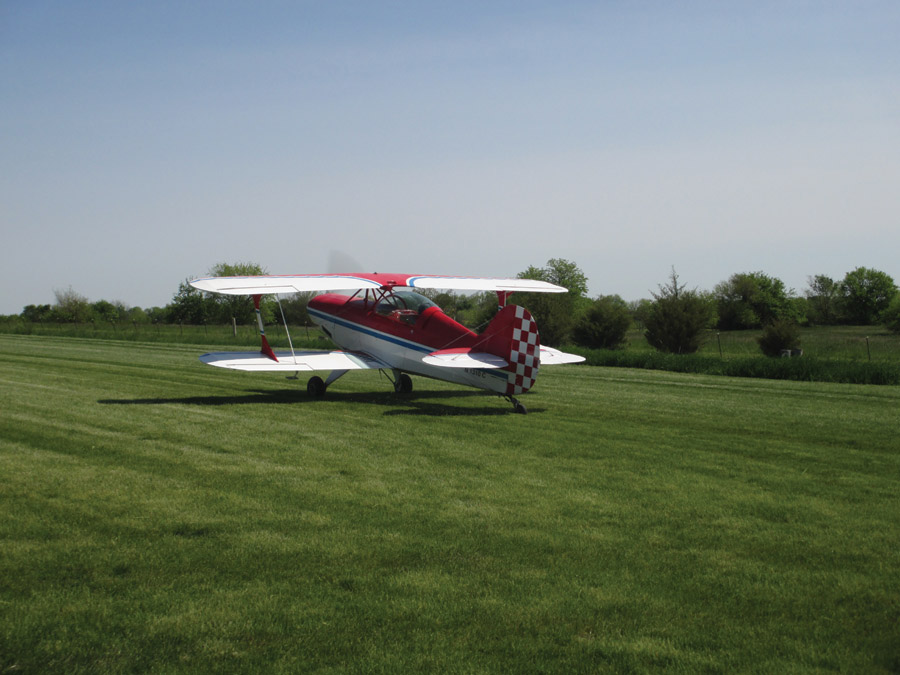
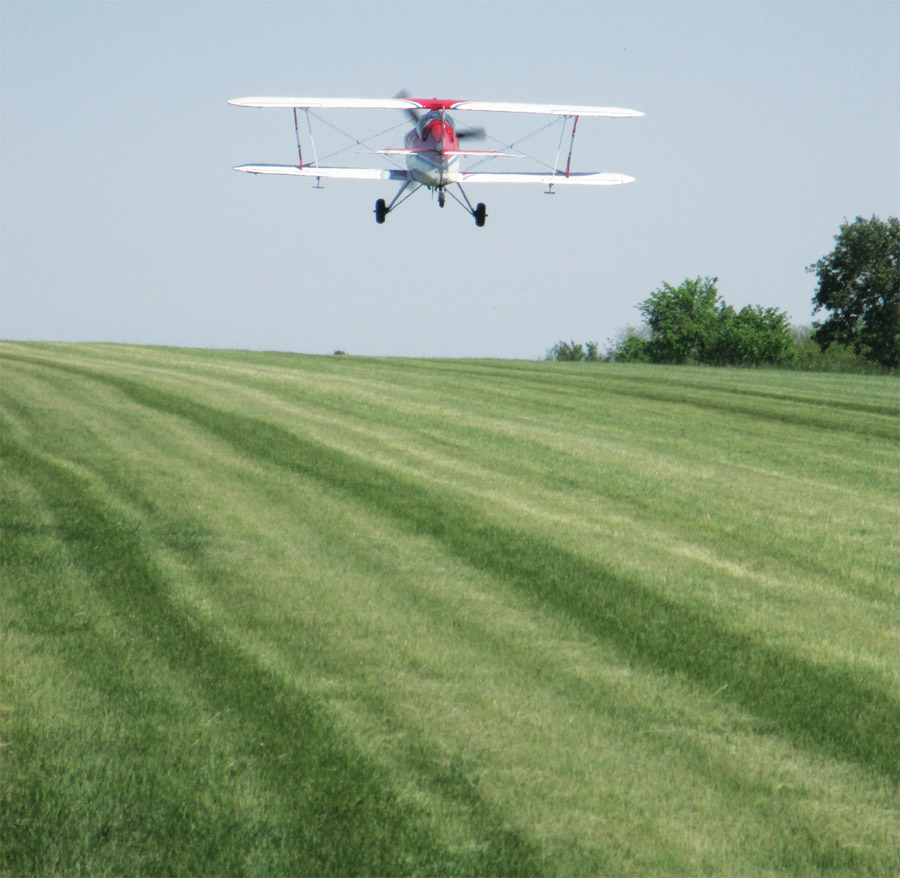
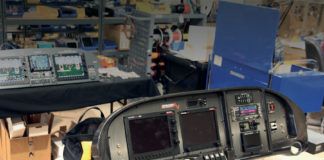


I live on NH69, 4000 grass. We fertilize it 3 times a year. We live in what’s called the: White Mountains and Lakes region. Most beautiful airport in America. Tim Andrew, Ossipee, NH.